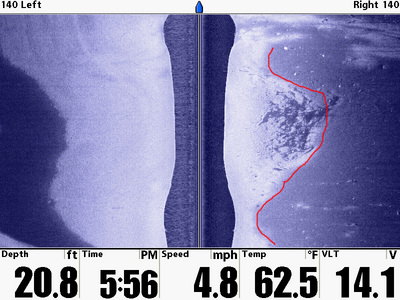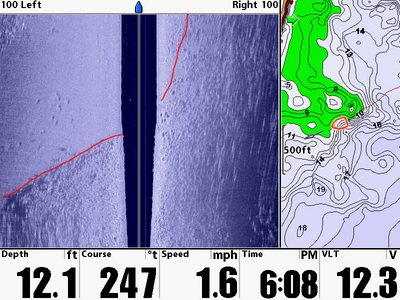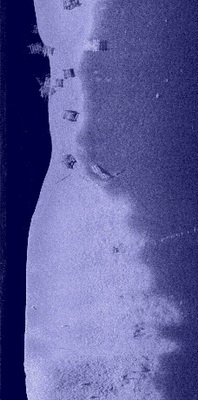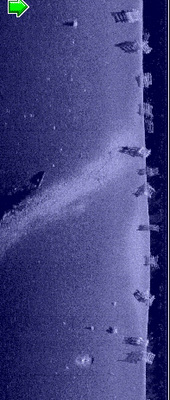One of the more common questions I’ve been receiving lately is, “can Humminbird Side Imaging be used to find transitions in bottom type….hard to soft, sand to gravel, etc?”
The answer is, “absolutely”. And it does so without having to drive directly over the transition. As long as the transition is within the range of the Side Imaging sonar (up to 240 feet on each side of the boat), you can spot these types of transitions with ease.
Here’s one example. This transition is from hard packed sand to muck. The sand, because is reflects more sonar energy, appears brighter. The muck, because it is a better absorber of sonar energy, appears darker. The bright-to-dark transition, therefore, marks the boundary between sand and muck. If you’re having trouble seeing it, look for the red line in the second image.
Here’s something else to remember: once you see the transition on your screen, you can freeze the image and drop waypoints all along the transition. Then, come back and focus your bait presentation all along that separation between bottom types.





